It has been apparent for a while now, based on a number of previous ASUS motherboards we've tested, that the company releases a dizzying number of software programs and utilities. The best of these is still AI Suite III which is a wide-reaching and central piece of software that helps manage things like fan profiles, power profiles, turbo behaviour and on-the-fly overclocking.
However, for ROG products ASUS delivers a number of additional software utilities to help eek out extra functionality and performance. With the launch of the ASUS Z270 range most of these utilities have been revamped and updated.
KeyBot II retains all previous KeyBot functionality but now includes more built-in macro key options (eject USB, audio switch from rear to front…), S5 mode functionality (power on, Clear CMOS, XMP…) and a direct connection to the Turbo app so that macro profiles can automatically initiate corresponding Turbo mode profiles from the Turbo App (built into Ai Suite III).
The ROG RAMCache II software, which complements pre-existing ROG RAMDisk software, has been improved for Z270 to help with program loading and file transfers of regularly accessed data. Users simply need to set aside the amount of RAM they would like to allocate for caching and the RAM Cache II software handles everything else behind the scenes when in Smart mode. There is an advanced mode that gives some additional parameters for controlling the software.
The ROG GameFirst software is now at version IV and supports Multi-Gate Teaming technology and Intelligent mode when used with Windows 8.1 and Windows 10 64-bit.
Multi-Gate teaming allows the onboard WiFi to be used at the same time as the Wired LAN to maximise network throughput, as well as the ability to prioritise different applications to different interfaces. For example gaming applications can take priority usage of the wired connection while torrent downloads could be pushed to the wireless.
The intelligent mode “contains smart learning and app identification, smart learning is to learn the most frequently used software to help choose the best networking connection automatically; app identification is to send unidentified applications to server for instant recognition.”
The ASUS AURA RGB software remains functionally the same as on previous AURA-enabled products KitGuru has tested, such as the Z170 Pro Gaming AURA. The range of adjustments that can be made is significant and can be synchronised across compatible ASUS AURA products, the number of which is consistently growing.
There are three lighting zones on the Maximus IX Formula that can all be tuned independently – the rear I/O, the centre around the ROG logo and the PCH heatsink. The option to add two more LED strips means, in theory, you can have up to 5 different colours and/or lighting patterns running at any one time. ASUS, unfortunately, does not provide any LED strips with the Maximus IX Formula which is a little disappointing given the high cost of the product.
The ASUS CloneDrive program is an extra utility that prospective buyers may see as either useful or excessive. There are already numerous free cloning utilities out there with full feature sets (Macrium Reflect, Clonezilla, GParted, Paragon, etc.) but ASUS CloneDrive is reasonably novel in that:
- CloneDrive will create a smaller sized back up due to the fact that it is a 1:1 copy
- Cloned drives can be used immediately after being cloned
- CloneDrive allows copies to be made simultaneously to two drives at a time
As part of the transition to a new audio codec ASUS has also revamped its two primary audio software offerings, Sonic Studio and Sonic Radar, both of which are uplifted to version 3. Key improvements to Sonic Studio III are as follows:
- Basic provides a simple mode for most users, while Advanced mode offers tweakers a way to optimize their system audio.
- Audio Routing allows users output sounds from the device of their choice.
- Per application profiles allow apps to always utilize the most optimum as profile determined by the user
- Autosave feature takes instant snapshots of the Sonic Studio profiles.
The relatively controversial Sonic Radar software, which interprets audio outputs to create a visual heat map of sound, has also been updated with the following key improvements:
- Simplified Radar so information can easily be understood even when looking at the radar through peripheral vision.
- 3D Arrow adds direct feedback where it’s needed, while remaining unobtrusive.
- Audio Boost allows users to temporarily listen to active Sonic Radar Filters.
 KitGuru KitGuru.net – Tech News | Hardware News | Hardware Reviews | IOS | Mobile | Gaming | Graphics Cards
KitGuru KitGuru.net – Tech News | Hardware News | Hardware Reviews | IOS | Mobile | Gaming | Graphics Cards


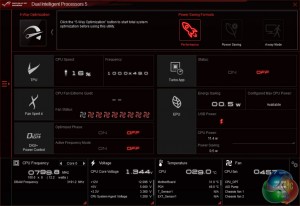

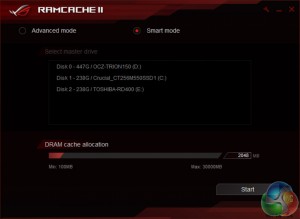
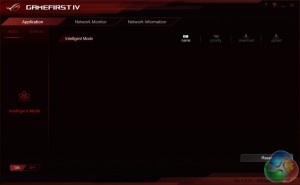
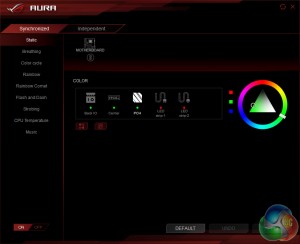
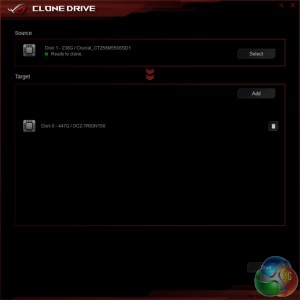
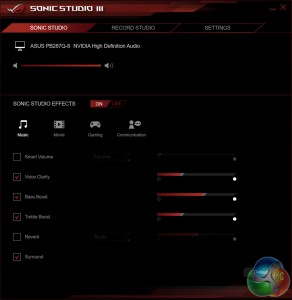
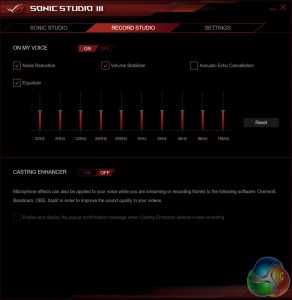
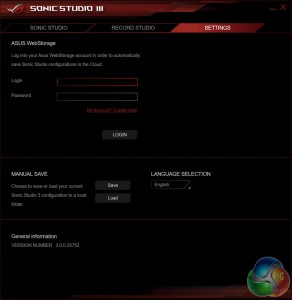
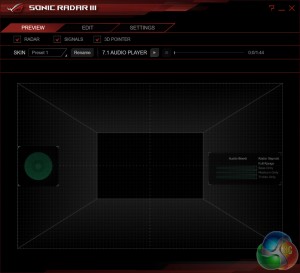

Not sure how this earns the worth buying award, considering its pros and cons, price has increased for the formula series and given its performance, is it worth buying? I mean they are doing a good job on audio and power usage but at the end of the day like you’ve said, it may be rather worth spending on another grade RoG motherboard.
Worth buying with the caveat that you intend to watercool your system, if not a lower spec board is a better alternative. Also the price will come down after the launch buzz passes, it always does.
USB 2.0 should have been dropped.
The price does go down for sure, but this board is significantly more expensive over previous formula and the price is around Z170 extreme if i convert the price from pound to hrk . Prices here in Croatia stay stupidly high for a long time
No, it can still be useful. I’m using one right now for my Corsair Commander Mini and another for my two USB 2.0 ports on the front of my case. Still need them a bit.
I’m replacing my GIGABYTE Z170X Gaming GT with this board. The number one reason, the RGB LED lighting!!!! Can’t have enough! I read the review of this board over at Guru3D.com and he said that this board was close to other ASUS Z270 boards in the $200 price range per features, but this one has all the extra RGB LED lighting that was adding to the cost. That and the water block.
I do understand that some won’t care, or even like, the extra RGB LEDs, but that is the ONE reason I will buy this board!!!! Honestly, if I had my way, this board would have even more lighting. 2017 is the year of RGB LED lighting, although it may just be a fad. Now to decide if I’m keeping my 6700k or buying this with that 7700k thing? No IPC improvement, such a shame. Would there possibly be any reason a 7700k would be an advantage over the 6700k? Besides the iGPU being better. lol
Funny, go to ASUS’ site and this board is shown with 8 SATA3 ports and SATAe support. Also is shown with a U.2 port.
O… i kinda liked it, but… i feel they didnt implement the capabilities of the rgb… i mean what if they could take the strix z270, and the main piece of the board, the weird geometric shape near the lower middle right of the board, take that, put it on the next strix or something, and add rgb on all the pointy parts, if anyone has seen the motherboard then how does this seem. i think this would go rlly well, specially if the rgb was blue, across where all the geometric shapes meet… srry this comment was rushed… so may not be worded accurately.
I had a look. The U.S version is the same (https://www.asus.com/us/ROG-Republic-Of-Gamers/ROG-MAXIMUS-IX-FORMULA/) don’t get confused with the Maximus VIII Formula (last gen, incidentally this has 8 SATA ports and U.2)
OK, I see, you’re right. The other board is the Maximus VIII. My bad, thanks.
I to was also pulled in by the lighting option, sucks its $70 more for that vs the Code. So if anyone wants to save $70, the Code is basically the same board, minus the lights and EK chiller. I think Formula has a couple more minuscule options, but if you just need a nice board for gaming and dont care about the options, get the Code. I’ll be getting the Formula… maybe, im waiting for the gtx 1080 ti, launching in February.
Don’t be fooled by the new i7 7700k! its practically the same as the 6700k. IF you get a 6700k and CAN push it to 4.7, it will out perform the 7700k at 5.0 (if you get a 7700k that can go that high). the 6700k at 4.5 is pretty much the same as the 7700k at 5.0. the igpu is practically the same, just a new name. The only REAL difference is they added support for 4K media decoding inside Windows 10’s PlayReady 3.0 DRM, which makes 4K Netflix possible on PC. So unless you absolutely need that…
Besides, Coffee lake (X and S versions with 6 cores 14nm) will be coming out by the end of 2017 and will supposedly be the same socket lga 1151 as per that ive read. Cannon lake is suppose to be for laptops and tablets, lower watts. Ice lake will be out sometime in 2018, more than likely a new socket….? My advice, save your money and keep the 6700k.
review on i7 7700k Kaby lake
http://arstechnica.com/gadgets/2017/01/intel-core-i7-7700k-kaby-lake-review/
We are thinking the same way. I’ll stay with the 6700k and get the FORMULA, that will be a nice build. Add a 512GB Samsung PRO 960 M.2 SSD for Windows, and my two ASUS RX 480s, that should get me by.
Why few device’s make use of usb 3.0 speed only really AC network adapters and storage devices
Usb 2 is still more then enough especially if it reduces costs
Dont get me wrong, Im getting the 7700k, im coming from a 3570k (4yo and still rocking 4.4 at 1.22v, not too bad). Im only getting the Formula over the Code because the board i was going to get was $400 also. So the price was already included in my budget. And why the 7700k over the 6700k… why not, its the same price. Im just saying for anyone who already has the 6700k, its not worth it. The only other thing i forgot to mention about the 7700k was some new technology (optane memory support) but it wont be relevant until the end of this year or even into next year sometime. Im waiting on the gtx 1080 ti =( or possibly the Vega depending on what really comes out. I saw the dev card in action. could be better or worse when it comes out… if it stacks up against the 1080 ti in performance vs price, i’ll go Vega.
Will the 6700K support Optane memory?
You are not crazy if u having pcie issues. I believe this is a known problem with all their PCIe slots they manufactured prior to using “safeslot” pcie slots. I have a Asus Rog Maximus viii hero alpha ,I suspect that part reason pcie slots where failing is same reason mine just came off the board with graphics card(EVGA Nvidia 1080 FTWx2) attached. Because they were not attached to the board properly I want to say this because I think a lot of people who were having pcie slots could be related to the same issue. Anyone who has ROG mobo not necessarily even exact same board so long the manufacturing method to attach was same plz msg me as Asus is trying claim physical dmg. I believe this is one main reasons they upgraded to “safeslot” pcie on their strix & rampage series of mobos. Furthermore I believe the weight of the “bigger ” graphic cards such as Nvidia 1060, 1070,1080 and AMD equivalent causes this happen more quickly than say a smaller Graphic cards. In either case I believe ASUS is fully aware of the issues with their Pcie slots prior to their change to “safeslot” furthermore if that was not case why did they make such abig deal about their new and improved pcie slots. Anyone with ROG boards wth similar issues or pcie not working contact me as I will b filling class action lawsuit. I will Not let this stand and let Asus use dispicable tactics to try avoid honoring their warranty or possibly putting spotlight on a recall issue they are trying hide. I have seen many people who claim pcie slots not working and while it’s not exactly same as my issues I believe they are related and will b conducting tests. Any info on slots coming up with video cards please email me at [email protected]